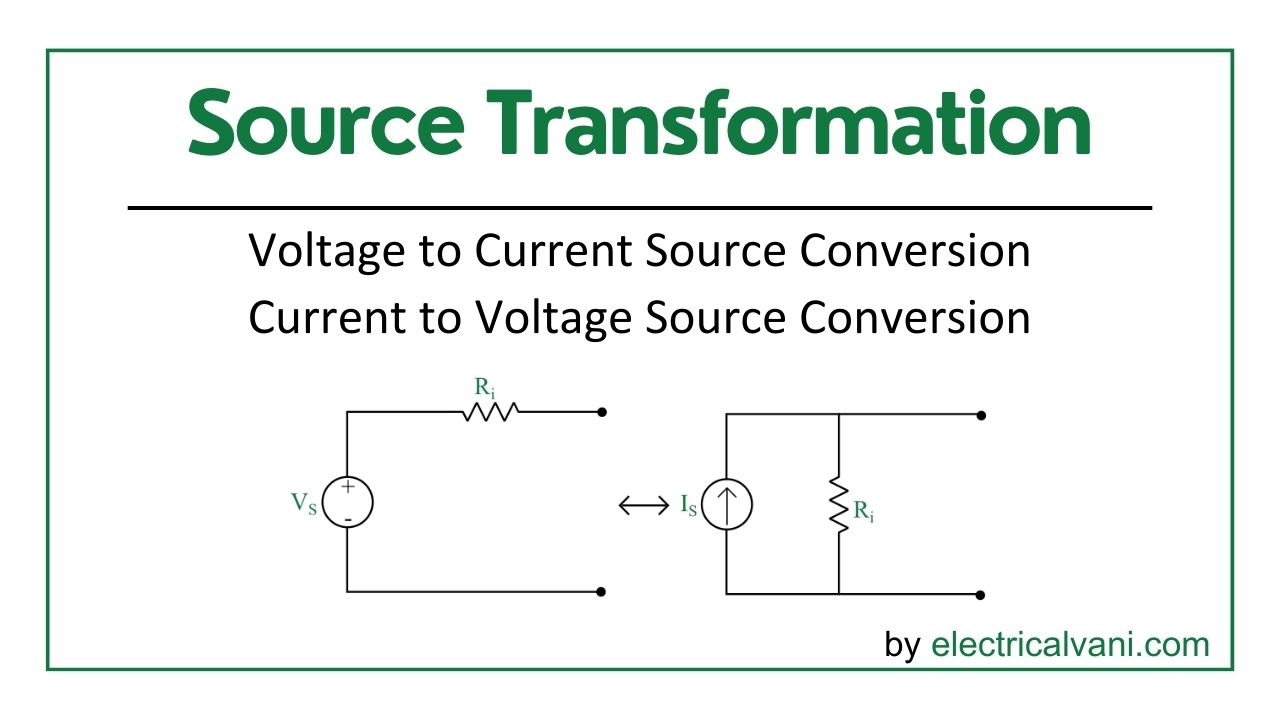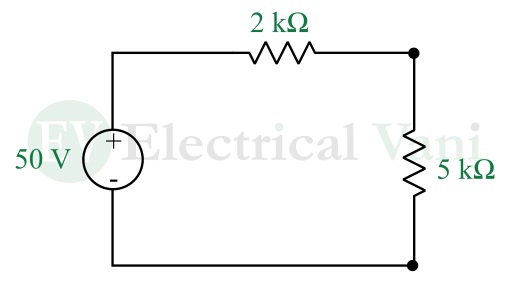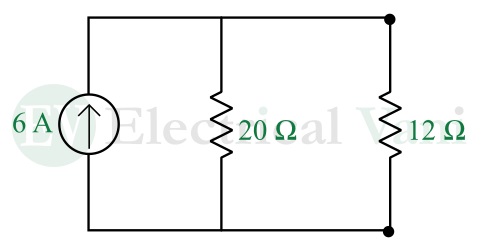In circuit analysis, source transformation is a very useful technique that helps to simplify the electrical circuits containing practical or real sources (practical voltage or current sources). Sometimes, it is also referred to as source conversion. Source transformation can be defined as a process of converting a voltage source into an equivalent current or a current source into an equivalent voltage source.
 This article is meant to explain the concept of source transformation. Here, we will cover the theory of voltage source to current source conversion and current source to voltage source conversion along with solved numerical examples.
This article is meant to explain the concept of source transformation. Here, we will cover the theory of voltage source to current source conversion and current source to voltage source conversion along with solved numerical examples.
Types of Source Transformations
The following two types of source transformations are used in electric circuit analysis:
- Practical voltage source to current source transformation
- Practical current source to voltage source transformation
Here, it is important to note that we can only transform a practical or real voltage source into an equivalent practical or real current source and vice-versa. But we cannot perform the source transformation on ideal voltage and current sources.
Voltage to Current Source Conversion
According to this source transformation technique, a real voltage source of voltage Vs and internal resistance Riv can be converted into an equivalent real current source with a source current IS with an internal resistance Ric connected in parallel as shown in the following figure.
In this case, the source current IS will be,
$$I_S=\frac{V_S}{R_{iv}}$$
And the internal resistance of the current source will be,
$$R_{ic}=R_{iv}$$
Current to Voltage Source Conversion
The current to voltage source conversion states that a practical current source having a source current IS and internal resistance Ric can be converted into an equivalent practical voltage source having a source voltage VS and an internal resistance Riv connected in series as shown in the following figure.
Here, the source voltage will be,
$$V_S=I_S R_{ic}$$
And the internal resistance of the voltage source will be,
$$R_{iv}=R_{ic}$$
This is all about voltage to current source transformation and current to voltage source transformation techniques. Let us now understand the application of the source transformation techniques in circuit analysis through some solved examples.
Source Transformation Examples
Example (1) – Determine the value of current in the 5 kΩ resistor in the following figure by converting the voltage source into a current source.
Solution – Applying voltage to the current source transformation technique, we get
In this circuit,
$$R_i=2\text{ kΩ}$$
The source current will be,
$$I_S=\frac{50}{2\text{k}}=25\text{ mA}$$
Now, the current I through the 5 kΩ resistor will be,
$$I=\frac{I_S×R_i}{R_i+5\text{k}}$$
Substituting the values, we have,
$$I=\frac{25\text{m}×2\text{k}}{2\text{k}+5\text{k}}=7.14\text{ mA}$$
Hence, the current through the 5 kΩ is 7.14 mA.
Example (2) – Find the current through and voltage across the resistor 12 Ω in the circuit shown below by converting the current source into a voltage source.
Solution – Applying current to voltage source transformation technique, we get,
$$R_i=20\text{ Ω}$$
$$V_s=6×20=120\text{ V}$$
The current through the 12 Ω resistor will be,
$$I=\frac{V_S}{R_i+12}$$
$$⇒I=\frac{120}{20+12}=3.75\text{ A}$$
The voltage across the 12 Ω resistor will be,
$$V_L=I×12=3.75×12=45\text{ V}$$
Hence, the current through and voltage across the 12 Ω resistor is 3.75 A and 45 V respectively.
Problems Based on Source Transformation
Try solving the following problems to understand the application of source transformation techniques in circuit analysis.
Q. 1 – Find the current in the 3 Ω resistor in the following circuit by converting the current source into a voltage source.
Q. 2 – Find the voltage across and current through the load resistor RL in the circuit shown below. Use the voltage source to current source transformation technique.
Conclusion
This is all about the source transformation technique and its applications in circuit analysis. In this article, we have understood the basics of voltage source to current source transformation and current source to voltage source transformation along with solved examples based on these techniques. If still you have any questions related to this topic, kindly let me know in the comment section.